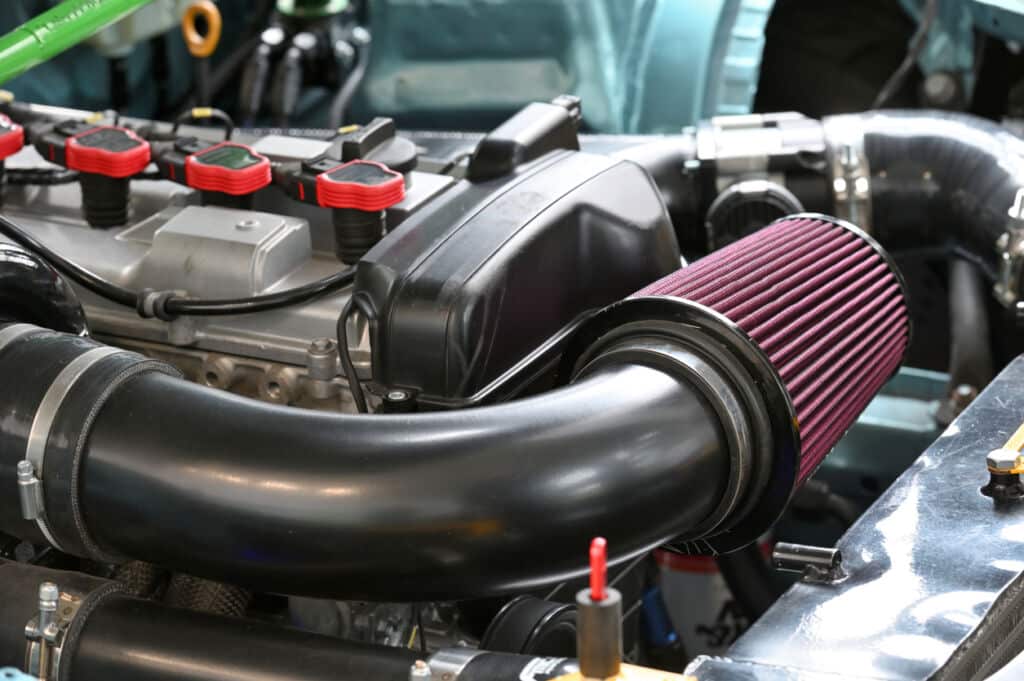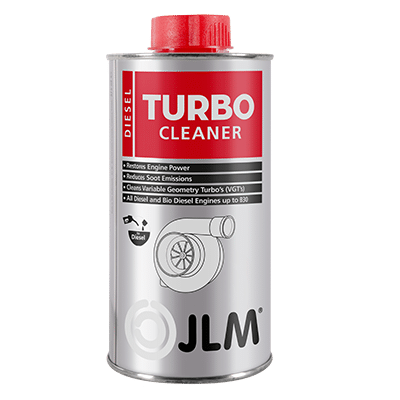Your vehicle’s engine relies on a precise mix of air and fuel to function efficiently. But how does that air get into the engine, and why does it matter? The answer lies in the air intake system, which is a crucial component designed to deliver clean, oxygen-rich air to support combustion.
In this article, we’ll explore what an air intake system is, how it works, and why it’s essential for your vehicle’s performance. Understanding its role and different components can help you to maintain optimal efficiency and avoid costly repairs down the line.
How does the air intake system work?
The air intake system pulls external air into the engine’s intake manifold, where it mixes with your vehicle’s fuel. This air-fuel mixture is then ignited and sent into your vehicle’s engine cylinders to support the combustion process.
The air intake system plays a key role in filtering out contaminants and creating the correct air-to-fuel ratio needed for combustion. This process helps the engine produce power efficiently whilst also reducing emissions.
Why is an air intake system important?
As alluded to above, the air intake system plays an important role in engine performance, fuel efficiency, and longevity. By delivering clean, filtered air to the engine, it ensures optimal combustion, leading to improved fuel economy and reduced emissions. A well-maintained air intake system helps prevent damage caused by dirt, debris, and other contaminants that could impact engine function.

The different components of an air intake system
Each part of the air intake system serves a specific function in delivering clean air to the engine. Below we provide a breakdown of these key components:
Engine air filter
One of the most vital parts of the air intake system, the engine air filter traps dirt, dust, and debris, preventing them from entering the engine. A clean air filter is essential for maintaining optimal airflow and preventing engine damage.
Mass air flow meter
The mass air flow meter is a sensor that measures the amount of air entering the engine and sends data to the engine control unit (ECU). This helps to gauge how much fuel needs to be injected, adjusting the air-fuel mixture accordingly.
Air intake tube
After being measured by the mass air flow meter, the air then continues through the air intake tube. The air intake tube channels the filtered air from the air filter to the throttle body or turbocharger, ensuring a smooth airflow path.
Turbocharger and intercooler
In vehicles with a turbocharger, the turbocharger compresses incoming air to improve engine performance. As this compression increases the temperature of the intake air, the intercooler then cools this compressed air before it enters the engine. By cooling the air, the chance of engine ping, detonation, and pre-ignition are reduced.
Throttle body
The throttle body is the component of the air intake system that controls the amount of air that enters the engine’s combustion chamber. The throttle body is connected, either electronically or via cable, to the accelerator pedal or cruise control system.
When the accelerator pad is pressed, the throttle plate/valve opens to allow more air into the engine. If the driver is using the cruise control system, a separate cable/signal will be used to operate the throttle body, maintaining a level to match the driver’s selected speed. This part of the process is crucial for regulating engine speed and performance.
Idle air control
The idle air control valve manages airflow when the vehicle is idling, ensuring stable engine operation when the accelerator isn’t engaged.
Intake manifold
After the intake air passes through the throttle body, it then passes into the intake manifold. Using a series of tubes, the intake manifold distributes air evenly across the engine’s cylinders, optimising combustion and power delivery.
Intake valves
Just before being delivered into the engine’s cylinders, the intake air is controlled by the intake valves. Intake valves open and close to allow air to enter the combustion chamber. Their proper function is essential for efficient engine operation.

The different types of air intake systems
Various air intake system designs cater to different performance needs. Here’s an overview of the most common types:
Cold air intake
A cold air intake system pulls cooler air into your engine and combustion chamber. With a cold air intake system, the air filters generally sit farther away from the engine bay than other intake systems. There is also a heat shield around the filter which keeps the airflow cool. Since cooler air has a higher oxygen density, it improves the combustion reaction which boosts engine performance and efficiency.
Ram-air intake
Similarly to a cold air intake system, the ram-air intake system delivers cooler air to the combustion chamber. However, unlike a cold air intake system, the ram-air intake filters sit at the front of the car, nearer to the engine. This system utilises forward motion to force more oxygen-rich air into the engine at higher speeds as the car travels, enhancing performance, particularly in sports cars and performance vehicles.
Short ram intake
A short ram intake is a compact design that increases airflow by reducing restrictions. Due to the smaller size, the short ram intake system supplies air at a faster rate than the other systems. Whilst this provides a boost in performance, it may also draw in warmer air from the engine bay. This can lead to lowered combustion reactions and less efficient performance.
What happens when the air intake system is bad?
A failing air intake system can lead to reduced performance, poor fuel efficiency, and increased emissions. Common air intake issues include a contaminated air intake system, clogged air filters, faulty sensors, and leaks in the intake tubing. If left unchecked, these problems can result in engine misfires and increased wear on internal components.
Fortunately, JLM Lubricants offers a range of products to help maintain your air intake system, such as EGR and air intake cleaners that remove carbon buildup and restore efficiency:
- JLM Diesel and Petrol Intake Cleaner Spray
- JLM Diesel Air Intake & EGR Cleaner (For professional use)
- JLM Diesel Intake Extreme Clean Toolkit (For professional use)
Common air intake FAQs
Can I drive with an intake air system leak?
Driving with a leak in the air intake system can cause poor engine performance, rough idling, and increased fuel consumption. It’s best to address leaks as soon as possible, consulting a professional mechanic to prevent further damage.
What happens if an air intake hose breaks?
A broken air intake hose can allow unfiltered air to enter the engine, leading to potential damage and reduced efficiency. Replacing a damaged hose promptly is crucial for maintaining engine health.
How do I know if my air intake is clogged?
Signs of a clogged air intake system include reduced acceleration, poor fuel economy, and increased engine noise. Regular inspections and maintenance can help prevent these issues and keep your engine running smoothly.
By understanding your vehicle’s air intake system, you can take proactive steps to ensure it remains in peak condition. For high-quality maintenance solutions, explore JLM Lubricants’ range of air intake products designed to keep your engine performing at its best.

